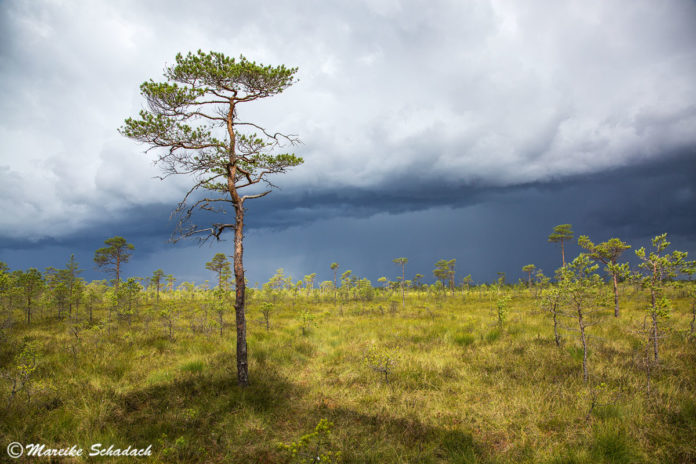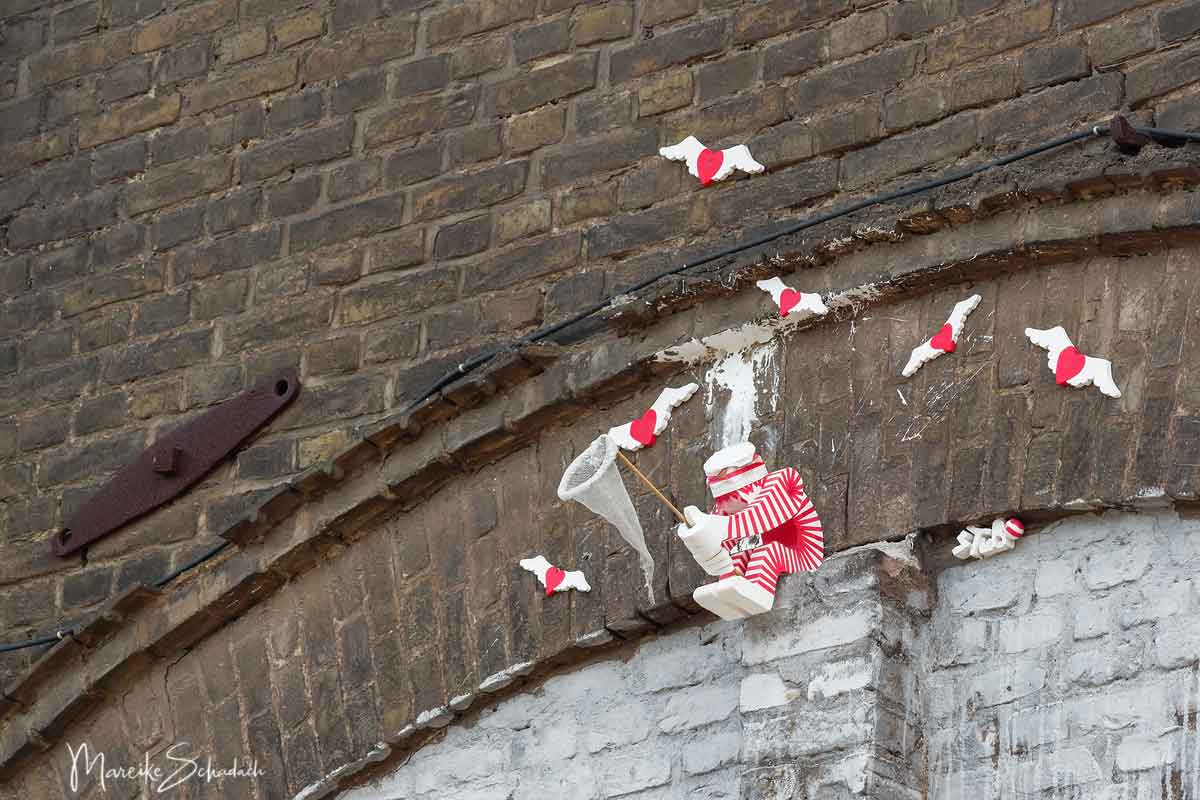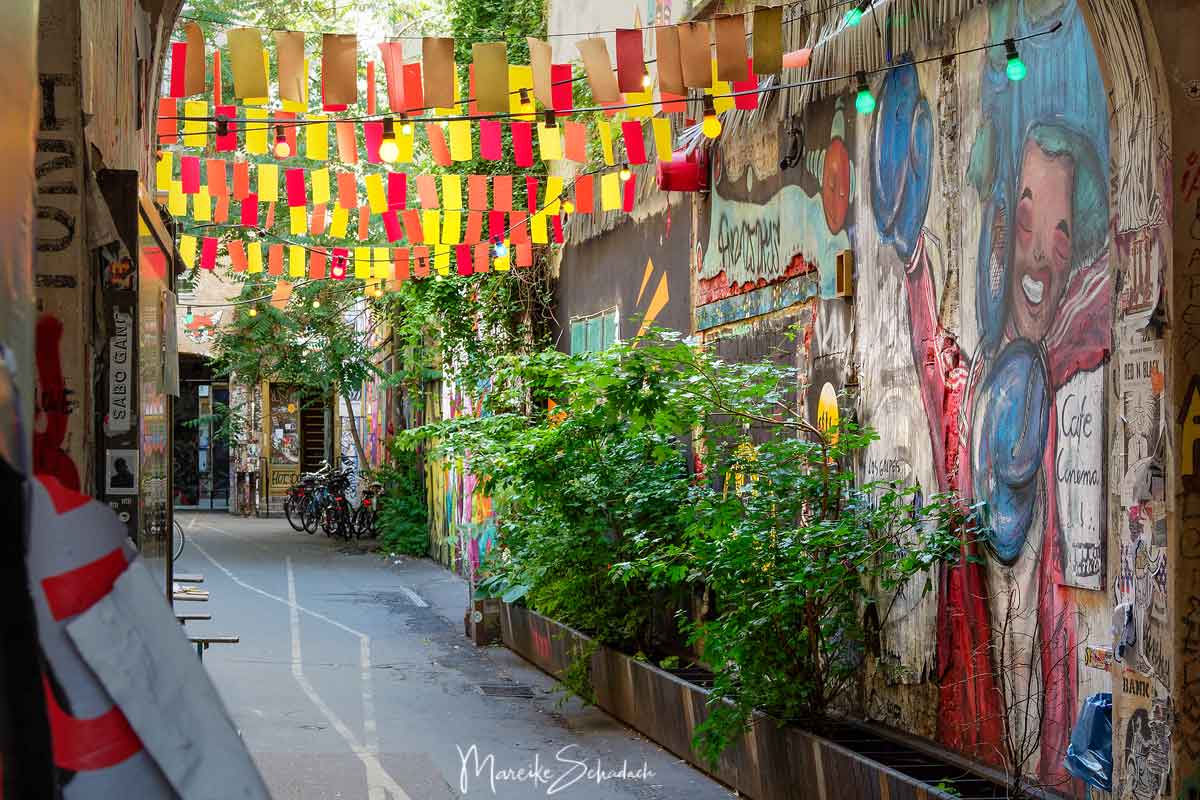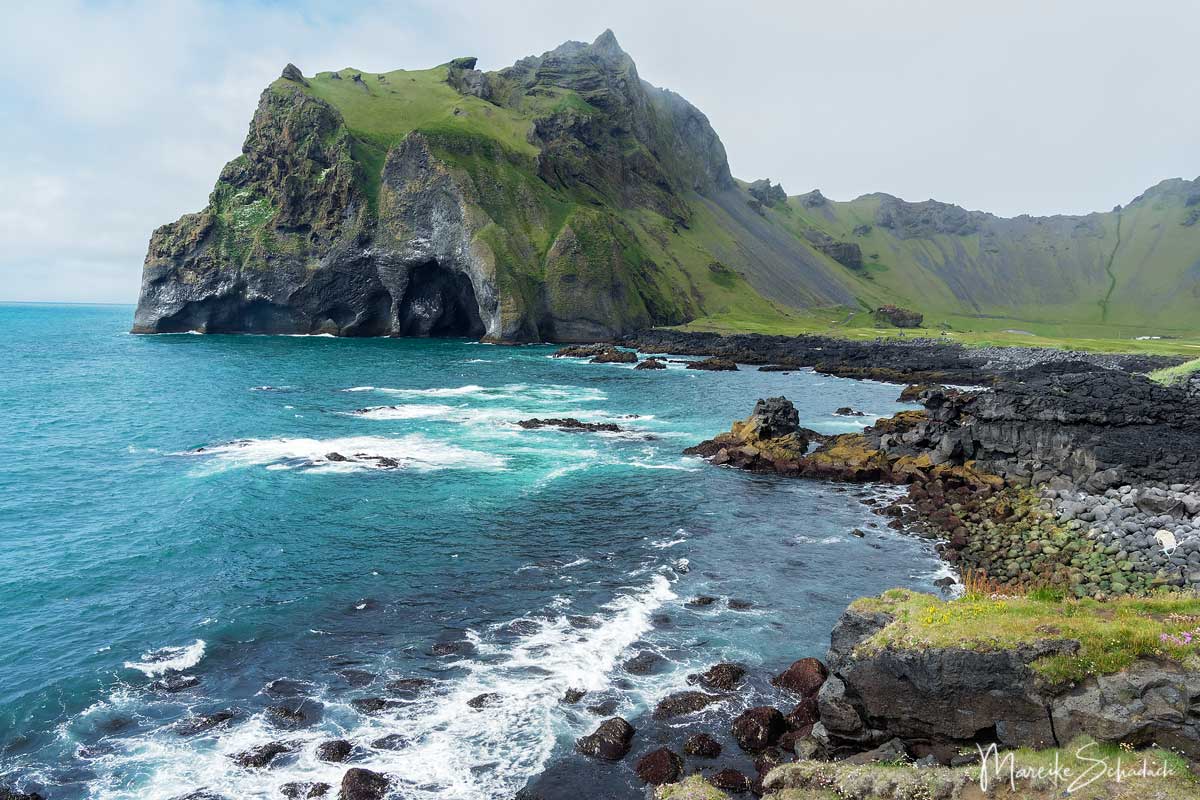Estonia. A hike through an upland moor is surprisingly varied. At first sight the wide landscape seems empty. But if you take a closer look, you will discover a colourful variety of species. And most of the time it's right next to the wooden path. Why I was so enthusiastic about the Soomaa bog in Estonia is explained in my following article. I'll also give you tips for your visit to the Soomaa bog and tell you why you should definitely take a moor bath here.

In the Land of Bogs - a Visit to Soomaa National Park
In German Soomaa means as much as "land of the bogs". The name is very aptly chosen. The Soomaa National Park, with 390 square kilometres, is the largest moorland, meadow and floodplain forest area in Estonia. The peat layer here is even up to seven metres thick. The ground bulges in small and large humps. In between are small puddles and puddles. The national park, founded in 1993, is home to moose, bears, wolves, lynxes and beavers. In addition, the high moor is an important resting place during bird migration. It is a place where you can forget the hectic world and get closer to nature again.
About one fifth of Estonia is covered by moorland. Some moors are up to 10,000 years old. The best known are the bogs Soomaa, Laheema, Viru and Matsalu.

A mystical Scenery in the Bog
From the observation tower on the Ingatsi nature trail, a panoramic view opens up over an unreal, mysterious landscape. Wooden paths run like veins through the moor and lose themselves on the horizon. In addition, the dark clouds of an approaching thunderstorm intensify the mystical impression of the scenery in front of us. From a distance we can already hear the first thunder roll.

At this sight it quickly becomes clear why the moorlands play an important role in Estonian mythology. Numerous stories tell of the Night Wisps and Moorland Spirits that have been observed here. During the Soviet era, resistance fighters hid in the impassable moors.
The little Horror Show - carnivorous Plants in the Soomaa bog
In an upland moor you can see plants and animals that are perfectly adapted to life here. Their biodiversity is enormous. About a quarter of the plants found in Estonia grow only here in the moors. Some species are also very old and date back to the Ice Age. The masters among them, however, are the carnivorous plants. The sundew also catches small insects with glue glands on its leaves. With this trick it manages to survive in the nutrient-poor raised bogs. And it has more than enough food, at least in summer. For thousands and thousands of flies and mosquitoes make the moor a land of milk and honey for the sundew. During your visit to Soomaa National Park, you will often find the sundew right next to the wooden pathways.

Why you should definitely take a Moor Bath
A moor bath is definitely a very special nature experience. It refreshes and invigorates the circulation. In addition, the moor water with its special ingredients is supposed to provide a soft, firm skin.
During your hike through the moor landscape you will pass several moor lakes. On some of them you'll also find wooden bathing platforms. Mostly there are also benches, which invite you to a small picnic. And if you're lucky or leave early in the morning, you'll be alone in the moor far and wide. What a mystical experience!
Here is one of my most important tips for your visit to the Soomaa moor: pack a towel for all occasions!

The Fifth Season
Every year a very special time begins in the Soomaa National Park after the snow melts. Then the hiking trails around the village of Riisa become waterways. Meanwhile the water level can be up to 5 meters higher than normal. The houses can then only be reached by boat. The Estonians call this time the "fifth season". They have prepared themselves for the high water. For guests there are also very special nature experiences. Because from March to May you can paddle on forest canoe tours in the flood area.
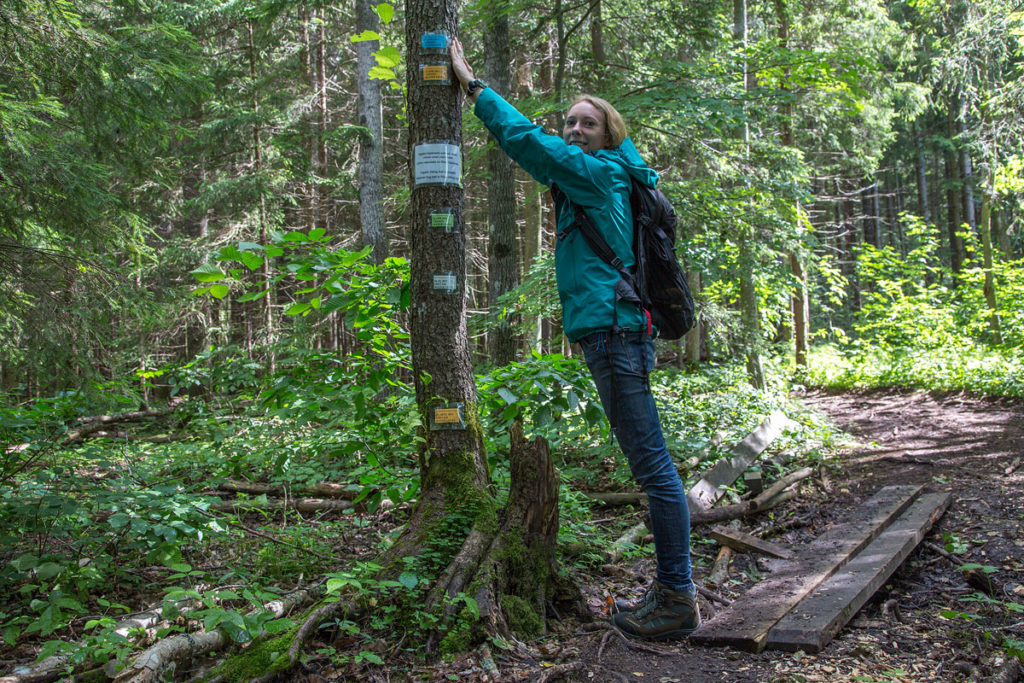
Tips for Hikes through the Soomaa Bog
A network of hiking trails and wooden plank paths runs through the Soomaa moor. You can discover these either on your own or as part of a guided tour.
During my visit to Soomaa National Park, I particularly enjoyed three hikes. Here are my tips for hikes through the Soomaa moor:
- Beaver path: The 1.8 km long beaver path starts directly at the nature centre Soomaa and leads past several beaver dams. Unfortunately we didn't see any beavers.
- Nature trail Riisa: The circular trail leads in a 4.8 km long round over a plank path through the Riisa moor.
- Nature trail Ingatsi: The 3 kilometres long path begins in Karukose. It first leads through the forest. At the edge of the forest you have a great view over the moor from the observation tower. Wooden boardwalks lead to moor ponds, picnic areas and bathing areas.

The Soomaa Nature Centre also has a small exhibition about your visit to Soomaa National Park. Here you can also get hiking maps. On the website of Soomaa.com you can book various outdoor activities. Here you can find for example moor hikes, canoe tours or beaver watching tours.
Something very special, however, are the so-called Moorschuh hikes. On these guided tours, you leave the paths and walk across the shaky moorland with a kind of snowshoes on your feet. This will bring you a little bit closer to nature.

Will your journey continue? Then I have another discovery tour for you: Read here my Tips where you can still find Relics from the Soviet Era in the Baltic States. finden könnt.
Have you ever been to one of the high moors of Estonia yourself? How did you like it? Do you have further tips or maybe a question about my report about the Soomaa bog? If so, I would be happy about your comments!
